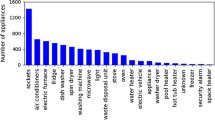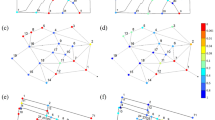Abstract
Water allocation is an important issue for systems with multiple stakeholders. Individual and collective decisions are very important for such systems. Thus, a new integrated game model is proposed to create a good balance between cooperative and non-cooperative strategies. A dam-aquifer system was selected for the case study in Iraq. The system referred to should supply different stakeholders with water requirements. Three game models are used: 1) cooperative theory, non-cooperative theory, new integrated game structure. Effective factors in the way of cooperation was considered to demonstrate variations in the allocation of water to the stakeholders. The results of the cooperative or centralized model were considered as the best results. The results indicated that the new game model had good agreement with the centralized model. The outputs indicated that the allocation share of the downstream coalition could increase 4, 5 and 7% for high, medium and low inflow, respectively when the allocation share of the upstream coalition decreased 5%, 6% and 5% for high, medium and low inflow, respectively. The inflow excess volume at 90%, 50%, and 10% are considered as low inflow, medium inflow, and high inflow, respectively. It has been observed that the allocated volume of water to coalition downstream is increased by decreasing the more allocated volume of water to the coalition upstream. In addition, the new model supported the individual profits by applying the rationality decision while the cooperative game did not consider the individual benefits. In addition, the effect of inflows to reservoirs was considered to investigate the issue of water allocation in a critical condition.














Similar content being viewed by others
References
Ahmadi A, Zolfagharipoor MA, Afzali AA (2019) Stability analysis of stakeholders’ cooperation in Inter-Basin water transfer projects: a case study. Water Resour Manag 33(1):1–18
Ahmed AN, Othman FB, Afan HA, Ibrahim RK, Fai CM, Hossain MS et al (2019) Machine learning methods for better water quality prediction. J Hydrol 578:124084
Dippong T, Mihali C, Năsui D, Berinde Z, Butean C (2018) Assessment of water physicochemical parameters in the Strîmtori-Firiza reservoir in Northwest Romania. Water Environ Res 90(3):220–233
Dippong T, Mihali C, Hoaghia MA, Cical E, Cosma A (2019) Chemical modeling of groundwater quality in the aquifer of Seini town–Someș plain, northwestern Romania. Ecotoxicol Environ Saf 168:88–101
Ehteram M, Binti Koting S, Afan HA, Mohd NS, Malek MA, Ahmed AN et al (2019a) New evolutionary algorithm for optimizing hydropower generation considering multireservoir systems. Appl Sci 9(11):2280
Ehteram M, Ahmed AN, Fai CM, Afan HA, El-Shafie A (2019b) Accuracy enhancement for zone mapping of a solar radiation forecasting based multi-objective model for better Management of the Generation of renewable energy. Energies 12(14):2730
Ehteram M, Ghotbi S, Kisi O, Najah Ahmed A, Hayder G, Ming Fai C et al (2019c) Investigation on the potential to integrate different artificial intelligence models with Metaheuristic algorithms for improving river suspended sediment predictions. Appl Sci 9(19):4149
Fu J, Zhong PA, Zhu F, Chen J, Wu YN, Xu B (2018) Water resources allocation in transboundary river based on asymmetric Nash–Harsanyi leader–follower game model. Water 10(3):270
Han Q, Tan G, Fu X, Mei Y, Yang Z (2018) Water resource optimal allocation based on multi-agent game theory of HanJiang river basin. Water 10(9):1184
Homayounfar M, Ganji A, Martinez CJ (2011) A novel solution for stochastic dynamic game of water allocation from a reservoir using collocation method. Water Resour Manag 25(13):3427–3444
Huang X, Chen X, Huang P (2018) Research on fuzzy cooperative game model of allocation of pollution discharge rights. Water 10(5):662
Jeong H, Ha S, Kim H (2018) Flood protection cost allocation using cooperative game theory for adapting infrastructure to climate change. J Water Resour Plan Manag 144(4):04018010
Khorshidi MS, Nikoo MR, Sadegh M, Nematollahi B (2019) A multi-objective risk-based game theoretic approach to reservoir operation policy in potential future drought condition. Water Resour Manag 33(6), 1999-2014
Konar M, Garcia M, Sanderson MR, Yu DJ, Sivapalan M (2019) Expanding the scope and Foundation of Sociohydrology as the science of coupled human-water systems. Water Resour Res 55(2):874–887
Lejano RP, Li L (2019) Cooperative game-theoretic perspectives on global climate action: evaluating international carbon reduction agreements. J Environ Econ Policy 8(1):79–89
Luchner J, Riegels ND, Bauer-Gottwein P (2019) Benefits of cooperation in transnational water-energy systems. J Water Resour Plan Manag 145(5):05019007
Madani K, Hooshyar M (2014) A game theory–reinforcement learning (GT–RL) method to develop optimal operation policies for multi-operator reservoir systems. J Hydrol 519:732–742
Mahjouri N, Ardestani M (2011) Application of cooperative and non-cooperative games in large-scale water quantity and quality management: a case study. Environ Monit Assess 172(1–4):157–169
Mehrparvar M, Ahmadi A, Safavi HR (2016) Social resolution of conflicts over water resources allocation in a river basin using cooperative game theory approaches: a case study. Int J River Basin Manag 14(1):33–45
Mianabadi H, Mostert E, Zarghami M, van de Giesen N (2014) A new bankruptcy method for conflict resolution in water resources allocation. J Environ Manag 144:152–159
Mooselu MG, Nikoo MR, Sadegh M (2019) A fuzzy multi-stakeholder socio-optimal model for water and waste load allocation. Environ Monit Assess 191(6):359
Nikoo MR, Kerachian R, Poorsepahy-Samian H (2012) An interval parameter model for cooperative inter-basin water resources allocation considering the water quality issues. Water Resour Manag 26(11):3329–3343
Poorsepahy-Samian H, Kerachian R, Nikoo MR (2012) Water and pollution discharge permit allocation to agricultural zones: application of game theory and min-max regret analysis. Water Resour Manag 26(14):4241–4257
Qin J, Fu X, Peng S, Xu Y, Huang J, Huang S (2019) Asymmetric bargaining model for water resource allocation over Transboundary Rivers. Int J Environ Res Public Health 16(10):1733
Ristić B, Madani K (2019) A game theory warning to blind drivers playing chicken with public goods. Water Resour Res 55(3):2000–2013
Saadatpour M, Khoshkam H (2018) Leader-follower and Nash bargaining game theory models for optimum waste load allocation, Gheshlagh River as case study. WWJ 29(4)
Sechi GM, Zucca R, Zuddas P (2013) Water costs allocation in complex systems using a cooperative game theory approach. Water Resour Manag 27(6):1781–1796
Sedghamiz A, Heidarpour M, Nikoo MR, Eslamian S (2018) A game theory approach for conjunctive use optimization model based on virtual water concept. Civ Eng J 4(6):1315–1325
Shahraki J, Sardar SA, Nouri S (2019) Application of met heuristic algorithm of ant Colony optimization in optimal allocation of water resources of Chah-Nime of Sistan under managerial scenarios. IJE 5(4):1
Skardi MJE, Afshar A, Solis SS (2013) Simulation-optimization model for non-point source pollution management in watersheds: application of cooperative game theory. KSCE J Civ Eng 17(6):1232–1240
Wang L, Zhao Y, Huang Y, Wang J, Li H, Zhai, & Jiang, S. (2019) Optimal water allocation based on water rights transaction models with administered and market-based systems: A case study of Shiyang River basin, China. Water 11(3):577
Wu N, Xu Y, Kilgour DM (2019) Water allocation analysis of the Zhanghe River basin using the graph model for conflict resolution with incomplete fuzzy preferences. Sustainability 11(4):1099
Xiao Y, Hipel KW, Fang L (2016) Incorporating water demand management into a cooperative water allocation framework. Water Resour Manag 30(9):2997–3012
Xu Y, Fu X, Qin J (2018) Qualifying coordination mechanism for cascade-reservoir operation with a new game-theoretical methodology. Water 10(12):1857
Yahya A, Saeed A, Ahmed AN, Binti Othman F, Ibrahim RK, Afan HA et al (2019) Water quality prediction model based support vector machine model for Ungauged River catchment under dual scenarios. Water 11(6):1231
Yaseen ZM, Allawi MF, Karami H, Ehteram M, Farzin S, Ahmed AN et al (2019a) A hybrid bat–swarm algorithm for optimizing dam and reservoir operation. Neural Comput & Applic 31(12):1–15
Yaseen ZM, Ehteram M, Hossain M, Fai CM, Binti Koting S, Mohd NS et al (2019b) A novel hybrid evolutionary data-intelligence algorithm for irrigation and power production management: application to multi-purpose reservoir systems. Sustainability 11(7):1953
Yuan L, He W, Liao Z, Degefu DM, An M, Zhang Z, Wu X (2019) Allocating water in the Mekong River basin during the dry season. Water 11(2):400
Zeng Y, Li J, Cai Y, Tan Q, Dai C (2019) A hybrid game theory and mathematical programming model for solving trans-boundary water conflicts. J Hydrol 570:666–681
Acknowledgements
The authors are grateful to University of Malaya, Malaysia, for supporting the study.
Funding
This study was funded by University of Malaya (University of Malaya Research Grant GPF082A-2018.
Author information
Authors and Affiliations
Corresponding author
Ethics declarations
Conflict of Interest
The authors declare that they have no conflict of interest.
Ethical Approval
This article does not contain any studies with human participants or animals performed by any of the authors.
Additional information
Publisher’s Note
Springer Nature remains neutral with regard to jurisdictional claims in published maps and institutional affiliations.
Rights and permissions
About this article
Cite this article
Ehteram, M., Ghotbi, S., Kisi, O. et al. Application of a Coordination Model for a Large Number of Stakeholders with a New Game Theory Model. Water Resour Manage 33, 5207–5230 (2019). https://doi.org/10.1007/s11269-019-02431-4
Received:
Accepted:
Published:
Issue Date:
DOI: https://doi.org/10.1007/s11269-019-02431-4




